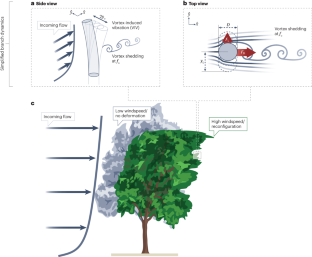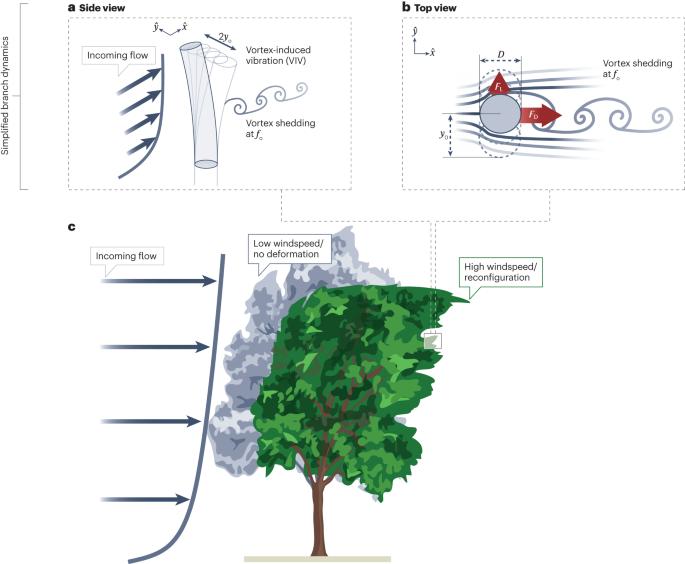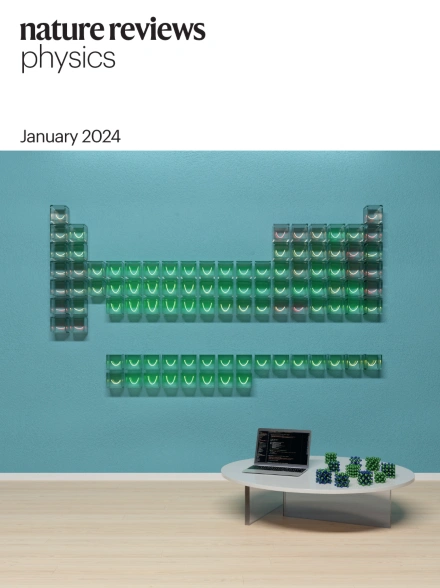Visual anemometry for physics-informed inference of wind
IF 44.8
1区 物理与天体物理
Q1 PHYSICS, APPLIED
引用次数: 0
Abstract
Accurate measurements of atmospheric flows at metre-scale resolution are essential for many sustainability applications, including optimal design of wind and solar farms, navigation and control of air flows in the built environment, monitoring of environmental phenomena such as wildfires and air pollution dispersal, and data assimilation into weather and climate models. Measurement of the relevant multiscale wind flows is inherently challenged by the optical transparency of the wind. This Perspective article explores new ways in which physics can be leveraged to ‘see’ environmental flows non-intrusively, that is, without the need to place measurement instruments directly in the flows of interest. Specifically, although wind itself is transparent, its effect can be seen in the motion of objects embedded in the environment and subjected to wind — swaying trees and flapping flags are commonly encountered examples. We survey emerging efforts to accomplish visual anemometry, the task of quantitatively inferring local wind conditions on the basis of the physics of observed flow–structure interactions. Approaches based on first-principles physics as well as data-driven, machine learning methods will be described, and remaining obstacles to fully generalizable visual anemometry are discussed. Visual anemometry measures winds using observations of associated environmental flow–structure interactions such as swaying trees and flapping flags. This Perspective article outlines opportunities for physics and data science to further develop visual anemometry for renewable energy, urban sustainability and environmental science.


用于风的物理推断的视觉风速计
精确测量米级分辨率的大气流动对许多可持续发展应用至关重要,包括风力和太阳能发电场的优化设计、建筑环境中气流的导航和控制、野火和空气污染扩散等环境现象的监测以及天气和气候模型的数据同化。由于风的光学透明性,测量相关的多尺度风流面临固有的挑战。这篇 "视角 "文章探讨了利用物理学非侵入性地 "观察 "环境流的新方法,即无需将测量仪器直接置于相关流体中。具体来说,虽然风本身是透明的,但它的影响可以从嵌入环境并受风影响的物体的运动中看到--摇曳的树木和飘扬的旗帜就是常见的例子。我们研究了为完成视觉风速测量所做的努力,即根据观测到的流动与结构相互作用的物理学原理定量推断当地风力状况。我们将介绍基于第一原理物理学的方法以及数据驱动的机器学习方法,并讨论在实现完全通用的目视风速测量方面仍然存在的障碍。目测风速是通过观察相关的环境流-结构相互作用(如摇摆的树木和飘动的旗帜)来测量风速的。这篇 "视角 "文章概述了物理学和数据科学在可再生能源、城市可持续发展和环境科学领域进一步发展目测风速仪的机遇。
本文章由计算机程序翻译,如有差异,请以英文原文为准。
求助全文
约1分钟内获得全文
求助全文
来源期刊

Nature Reviews Physics
Multiple-
CiteScore
47.80
自引率
0.50%
发文量
122
期刊介绍:
Nature Reviews Physics is an online-only reviews journal, part of the Nature Reviews portfolio of journals. It publishes high-quality technical reference, review, and commentary articles in all areas of fundamental and applied physics. The journal offers a range of content types, including Reviews, Perspectives, Roadmaps, Technical Reviews, Expert Recommendations, Comments, Editorials, Research Highlights, Features, and News & Views, which cover significant advances in the field and topical issues. Nature Reviews Physics is published monthly from January 2019 and does not have external, academic editors. Instead, all editorial decisions are made by a dedicated team of full-time professional editors.
 求助内容:
求助内容: 应助结果提醒方式:
应助结果提醒方式:


